
JOURNAL OF MOLECULAR GRAPHICS & MODELLING
Scope & Guideline
Transforming Research with Cutting-edge Modeling Techniques
Introduction
Aims and Scopes
- Molecular Dynamics Simulations:
The journal frequently publishes studies utilizing molecular dynamics simulations to investigate the behavior of molecules in various environments, providing insights into structural and dynamical properties. - Density Functional Theory (DFT) Calculations:
DFT is a common computational method featured in the journal, allowing researchers to explore electronic structures, reaction mechanisms, and material properties at the quantum level. - Drug Discovery and Design:
A significant focus is placed on computational approaches for drug discovery, including virtual screening, molecular docking, and pharmacophore modeling to identify potential therapeutic candidates. - Material Science Applications:
The journal covers research on the properties and applications of novel materials, particularly in the context of energy storage, catalysis, and nanotechnology, often emphasizing their molecular-level interactions. - Biomolecular Interactions:
Research on protein-ligand interactions, enzyme mechanisms, and the development of biomolecular sensors is prevalent, highlighting the importance of computational methods in understanding biological processes. - Machine Learning Integration:
There is an emerging trend of integrating machine learning techniques with traditional computational methods to enhance predictive modeling and accelerate the discovery of new compounds.
Trending and Emerging
- Advanced Machine Learning Applications:
The integration of machine learning techniques in molecular modeling is on the rise, with researchers applying AI to predict molecular properties and optimize drug design. - COVID-19 Related Studies:
There has been an increase in publications focused on SARS-CoV-2, utilizing computational methods to explore drug interactions, structural dynamics, and potential inhibitors. - Nanotechnology and Nanomaterials:
Research on nanostructures and their applications in drug delivery, sensors, and energy conversion is trending, reflecting growing interest in nanoscale materials and their unique properties. - Multiscale Modeling Approaches:
The journal is seeing a trend towards multiscale modeling, combining different computational techniques to capture complex phenomena in materials and biological systems. - Environmental and Green Chemistry:
An emerging interest in sustainable practices and green chemistry is evident, with a focus on developing eco-friendly materials and processes using computational insights. - Complex Biomolecular Systems:
Research surrounding complex biomolecular systems, including protein interactions and the dynamics of larger biological assemblies, is gaining prominence, highlighting the need for detailed computational studies.
Declining or Waning
- Classical Force Field Studies:
Traditional molecular mechanics studies based on classical force fields have seen a decline, as researchers increasingly adopt more sophisticated quantum mechanical approaches like DFT and hybrid methods. - Empirical Modeling Techniques:
There has been a noticeable reduction in the publication of studies relying solely on empirical models, as the field shifts toward more data-driven, computationally intensive methods. - Static Structural Analysis:
The focus on static structural analysis of small molecules without dynamic considerations has decreased, as dynamic simulations and real-time interactions gain traction in research. - General Computational Chemistry:
There is a decline in general computational chemistry studies that do not employ advanced techniques, as the journal increasingly emphasizes high-impact studies with innovative methodologies.
Similar Journals
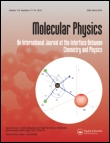
MOLECULAR PHYSICS
Shedding light on the complexities of molecular systems.MOLECULAR PHYSICS, published by Taylor & Francis Ltd, is a distinguished international journal that has been advancing the fields of biophysics, condensed matter physics, molecular biology, and physical and theoretical chemistry since its inception in 1958. With an ISSN of 0026-8976 and an E-ISSN of 1362-3028, the journal provides a rich platform for the dissemination of high-quality research, evidenced by its Q3 ranking in several domains including both biophysics and condensed matter physics as of 2023. Although the journal operates on a traditional subscription model rather than an Open Access basis, its rigorous selection process ensures the publication of relevant and impactful articles. The journal's continued convergence of research until 2024 underlines its ongoing significance and adaptability in an ever-evolving scientific landscape. For researchers, professionals, and students alike, MOLECULAR PHYSICS serves as an essential resource for keeping abreast of the latest developments, fostering collaboration, and inspiring future advancements in molecular theory and applications.

STRUCTURAL CHEMISTRY
Transforming Understanding through Structural AnalysisSTRUCTURAL CHEMISTRY is a premier journal published by SPRINGER/PLENUM PUBLISHERS, dedicated to advancing the study and understanding of the structural aspects of chemistry. With an ISSN of 1040-0400 and an E-ISSN of 1572-9001, this journal serves as a critical resource for researchers and professionals engaged in the fields of Condensed Matter Physics and Physical and Theoretical Chemistry. Since its inception in 1990, it has become an essential platform for disseminating high-quality research, featuring articles that explore innovative methodologies, experimental techniques, and theoretical frameworks. As evidenced by its Scopus rankings, including #192 in Condensed Matter Physics and #101 in Physical and Theoretical Chemistry, the journal occupies a respected position within the academic community, promoting interdisciplinary collaboration and insight. While it operates on a traditional subscription model, the journal continues to broaden its reach to foster knowledge exchange among scholars worldwide. With a commitment to excellence and relevance, STRUCTURAL CHEMISTRY remains a vital contributor to the scientific dialogue surrounding chemical structure and its myriad implications across various scientific disciplines.
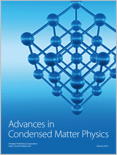
Advances in Condensed Matter Physics
Fostering Collaboration in Cutting-Edge PhysicsAdvances in Condensed Matter Physics is a distinguished journal published by HINDAWI LTD, dedicated to the rapid dissemination of high-quality research in the field of condensed matter physics. Since its inception in 2008, this Open Access journal has facilitated wide accessibility to cutting-edge findings and theoretical advancements, with aims to foster collaboration and innovation within the scientific community. With an ISSN of 1687-8108 and an E-ISSN of 1687-8124, the journal covers an extensive range of topics, from quantum materials to nanotechnology, ensuring relevance and engagement across various sub-disciplines. As a testament to its impact in the field, it is ranked in the Q3 category for 2023 within Scopus and holds a position in the 34th percentile for physics and astronomy. The journal's continuous commitment to publishing significant exploratory research until 2024 makes it a pivotal resource for researchers, professionals, and students eager to stay on the leading edge of condensed matter physics advancements.
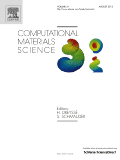
COMPUTATIONAL MATERIALS SCIENCE
Transforming Ideas into Material SolutionsCOMPUTATIONAL MATERIALS SCIENCE is a prestigious academic journal dedicated to the dissemination of innovative research in the field of computational materials science, emphasizing the interplay between computational methodologies and materials engineering. Published by ELSEVIER in the Netherlands, this journal showcases high-impact articles that contribute significantly to the understanding of material properties through computational techniques. As evidenced by its 2023 Scopus Rankings, which place it in the top quartiles across multiple disciplines including Computer Science, Materials Science, and Physics and Astronomy, it is a vital resource for researchers, professionals, and students alike. With a focus on advancing scientific knowledge and practical applications, COMPUTATIONAL MATERIALS SCIENCE aims to bridge the gap between theoretical investigations and experimental validation. Explore a wealth of cutting-edge research designed to inspire the next generation of innovations in materials science through this esteemed publication.

PHYSICA STATUS SOLIDI B-BASIC SOLID STATE PHYSICS
Illuminating Innovations in Basic Solid State ResearchPHYSICA STATUS SOLIDI B-BASIC SOLID STATE PHYSICS, published by Wiley-VCH Verlag GmbH in Germany, is an esteemed journal within the condensed matter physics sphere, covering pivotal advancements in basic solid state physics. With a rich history dating back to 1961, it serves as a scholarly platform for researchers, professionals, and students alike, providing insights into the fundamental properties and applications of electronic, optical, and magnetic materials. The journal currently holds a respectable Q3 ranking in both Condensed Matter Physics and Electronic, Optical, and Magnetic Materials as of 2023, indicating its impactful contributions to these fields despite its competitive landscape. While it does not offer open access, its comprehensive research findings are critical for those engaged in innovative material science research. With a convergence period extending to 2024, PHYSICA STATUS SOLIDI B continues to play a significant role in facilitating knowledge exchange and fostering advancements in solid state physics.
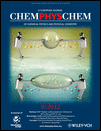
CHEMPHYSCHEM
Fostering High-Impact Discoveries in Theoretical and Experimental ScienceCHEMPHYSCHEM, published by WILEY-V C H VERLAG GMBH in Germany, stands as a pivotal resource for researchers and professionals in the fields of Atomic and Molecular Physics, as well as Physical and Theoretical Chemistry. With a commendable impact across its converged years from 2000 to 2024, the journal is categorized in the second quartile (Q2) for both aforementioned fields according to the 2023 metrics, underscoring its significance in advancing scientific dialogue and research. CHEMPHYSCHEM is committed to disseminating high-quality, peer-reviewed research articles that delve into the intricate interplay between chemistry and physics, making it an essential read for students and experts alike. The journal does not currently offer open access options, allowing for focused scholarly discussions that cater to the academic community's needs. As reflected in its Scopus rankings, CHEMPHYSCHEM maintains respectable standings, ranking #84/224 and #90/189 in its respective categories, demonstrating its commitment to high-impact research and innovation.
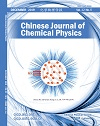
CHINESE JOURNAL OF CHEMICAL PHYSICS
Fostering Collaboration in the World of Chemical PhysicsChinese Journal of Chemical Physics, published by the Chinese Physical Society, serves as a pivotal platform for advancing the field of chemical physics, encompassing groundbreaking research and innovative methodologies since its inception in 2000. With an ISSN of 1674-0068 and E-ISSN of 2327-2244, the journal has established itself within the academic community, reflected in its 2023 classification as Q3 in Physical and Theoretical Chemistry and a Scopus rank of #142 out of 189, representing the 25th percentile in this competitive field. Although it does not currently operate as an open-access publication, its commitment to disseminating pivotal scientific research continues to attract scholars and professionals alike. The journal aims to bridge the gap between theoretical principles and practical applications in chemical physics, thereby fostering collaboration and innovation. By contributing significantly to the discourse in this dynamic domain, the Chinese Journal of Chemical Physics remains an essential resource for researchers, professionals, and students eager to stay abreast of contemporary developments.

JOURNAL OF MOLECULAR MODELING
Exploring the Depths of Computational ChemistryJOURNAL OF MOLECULAR MODELING, published by Springer, is a pivotal resource for researchers and professionals in the fields of chemistry, computer science, and molecular sciences. The journal's ISSN is 1610-2940, with an E-ISSN of 0948-5023, reflecting its commitment to disseminating cutting-edge research from 1996 to 2024. Although the journal does not operate under an Open Access model, it remains an invaluable platform for the publication of innovative studies related to computational methods, theoretical chemistry, and molecular simulations. With a notable categorization across multiple quartiles—including Q4 in Catalysis and Q3 in Computational Theory and Mathematics—the journal holds a distinct rank in Scopus, highlighting its influence and contribution to the discipline. The importance of this journal lies in its ability to bridge the gap between theoretical understanding and practical applications, making it essential reading for students and scholars seeking to advance their knowledge and research in molecular modeling.

CHEMICAL PHYSICS LETTERS
Unveiling Breakthroughs in Physical Chemistry ResearchCHEMICAL PHYSICS LETTERS, published by Elsevier, is a prestigious journal that has been at the forefront of advancing knowledge in the fields of physical and theoretical chemistry and physics since its inception in 1967. With an impressive impact factor reflective of its high-quality research output, this journal holds Q2 quartile rankings in both the Physical and Theoretical Chemistry and Physics and Astronomy categories for 2023. It is recognized as a key platform for disseminating groundbreaking findings, with Scopus rankings placing it within the top 76th and 66th percentiles in its respective categories. Researchers and professionals benefit from its insightful contributions and rigorous peer-review process, making it an essential resource for those engaged in cutting-edge chemical physics studies. Although the journal is not open access, it remains accessible through various institutional subscriptions, ensuring that a wide audience can explore its wealth of knowledge. Located in Amsterdam, Netherlands, the journal continues to drive innovation and collaboration across diverse scientific disciplines.
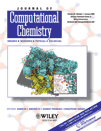
JOURNAL OF COMPUTATIONAL CHEMISTRY
Elevating Research Standards in Computational ChemistryThe Journal of Computational Chemistry, published by Wiley, is a premier platform in the fields of computational chemistry and computational mathematics. Established in 1980 and continuing through 2024, this journal serves as an essential resource for researchers, professionals, and students seeking to advance their understanding and application of computational methods in chemical research. With a commendable impact factor and ranking in the top quartile (Q2) for both Chemistry and Computational Mathematics, it boasts impressive Scopus rankings—22nd out of 189 in Computational Mathematics and 102nd out of 408 in General Chemistry, indicating its strong influence within these scientific communities. While it does not offer open access, the Journal of Computational Chemistry remains a vital venue for disseminating groundbreaking research and fostering collaboration in the computational science landscape. For those at the forefront of innovation, staying abreast of the latest findings published here is indispensable for advancing their work in theoretical and applied chemistry.